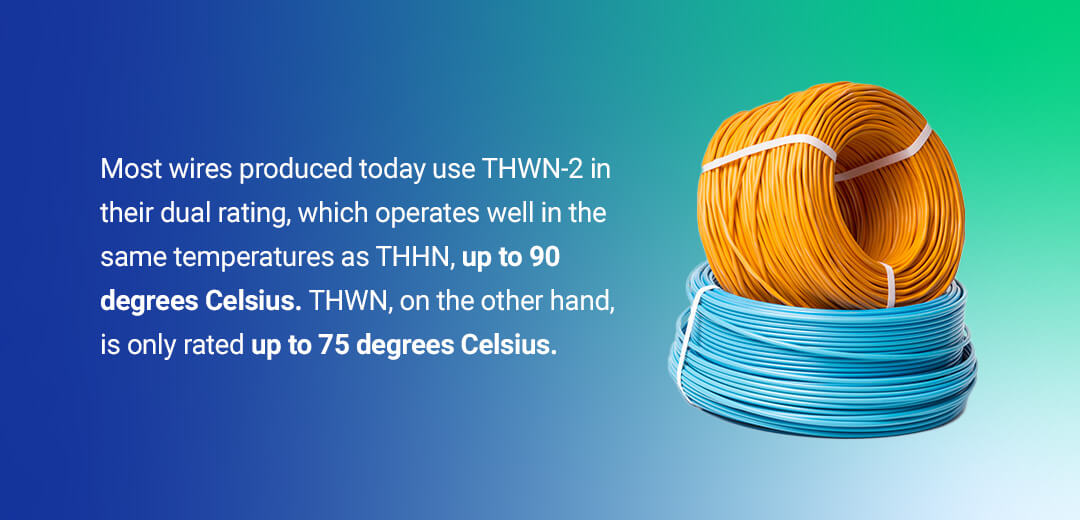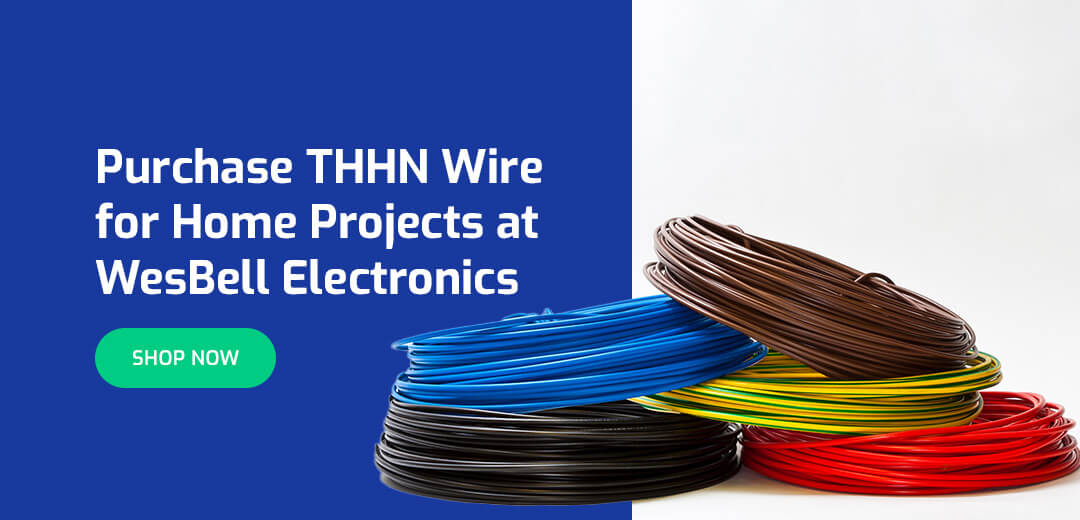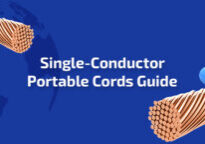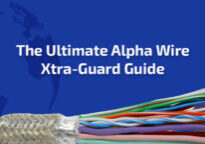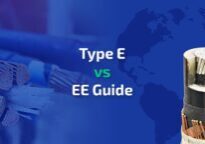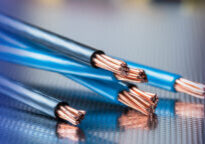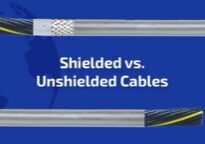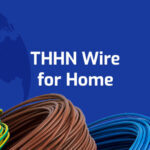
Jan 10, 2023
THHN Wire for Home
Thermoplastic high heat-resistant nylon-coated (THHN) wire is a PVC-insulated, single conductor wire with a nylon jacket to protect against heat, oil, abrasion and damage. Electricians commonly use THHN wire (learn what THHN wire is) for residential and commercial wiring because it’s versatile and works for nearly every application. Learn more about this dynamic electrical wire below.
Types of THHN Wire Used for Homes
The following are standard types of THHN building wire:
- Solid conductor THHN: This wire has a solid copper core and an American wire gauges (AWG) size of 14-10. Electricians commonly use solid conductor THHN to run power to lights and outlets in buildings and appliances and machine tools.
- Stranded conductor THHN: This wire contains multiple strands of copper instead of a single solid core. The copper strands twist together to form a flexible conductor that’s easier to work with and bend around corners. Electricians commonly use stranded conductor THHN when they need flexibility, such as in conduit installations or where the wire must be routed around corners or obstacles. It has an AWG size of 14-4/0.
- Aluminum conductor THHN: This wire contains an aluminum core instead of copper. It’s a great option when costs are a concern, as aluminum is generally less expensive than copper. However, aluminum is less conductive than copper, so this type of wire is best for situations that don’t require high conductivity.
The use of THHN wire within a circuit is identified through a color scheme, a policy based on the National Electric Code (NEC). THHN wires have jacket colors available in many colors.
THHN wire is also manufactured in a dual-wire rating for water resistance — thermoplastic heat- and water-resistant (THWN) — that is THHN-THWN-2. The THHN-THWN-2 wire is approved for use in wet locations. Most wires produced today use THWN-2 in their dual rating, which operates well in the same temperatures as THHN, up to 90 degrees Celsius. THWN, on the other hand, is only rated up to 75 degrees Celsius.
The NEC recommends and allows THHN to be used in dry locations only, although THWN or THWN-2 qualifies a wire to be used in wet areas, too.
Residential Applications for THHN Wire
Versatility and durability make THHN wire popular for residential electrical applications. Electricians use it for various applications in homes, including:
- Running power to lights, switches and outlets
- Wiring appliances such as refrigerators, ovens and air conditioners
- Wiring machine tools
- Wiring in dry and damp locations, both indoors and out
- In conduit installations where the wire must be protected from damage and exposure to the elements
- In grounding applications that require a reliable, durable wire to protect against electrical shock
Things to Look out for When Wiring THHN Electrical Wire
Below are a few things to consider before wiring your home with THHN fixture wire:
- A licensed electrician must approve the use of THHN wiring in a residential setting beforehand.
- THHN wire’s nylon coating can make installation difficult.
- Thinner THHN wires can leak or break down.
- THHN wire’s PVC jacket can produce toxic smoke when burned.
Here are some electrical wiring tips to ensure safe, effective and efficient installation:
- Choose the right wire size for the application — using one too small can lead to overheating and potentially cause a fire.
- Follow proper installation procedures, especially with the electric meter, electrical disconnects, electric panels and sub-panels. Use a conduit to protect the wire from damage and ensure the wire is grounded properly.
- Be aware of potential hazards, like exposed wires or live circuits.
- Take appropriate safety precautions, such as wearing protective gear and turning the power off before beginning work.
- Label and identify the wire properly, both to ensure electrical code compliance and to make future maintenance and repairs safe and effective.
- Check your appliance wiring and its electrical connection regularly. This includes small and large appliances, from radios and coffee pots to electric ranges, ovens and refrigerators. Make sure you’ve installed dryer cords, range cords, ovens and dishwashers properly. Check how these appliances are connected to THHN wires and other electrical wires.
- Keep in mind there are good and bad electrical wiring connections. Note that a flooded home may pose dangers to your electrical wiring connections. Check whether you are making the proper knots with the electrical wires.
Purchase THHN Wire for Home Projects at WesBell Electronics
THHN wire is a versatile, reliable choice for various residential electrical applications. Whether you’re wiring lights, outlets, appliances, or machine tools, it offers excellent performance, durability, and flexibility.
Whether you’re a homeowner, electrician or DIY enthusiast, consider using THHN wire for your next electrical project to enjoy its many benefits. WesBell Electronics carries many affordable THHN wires in various AWG sizes, including 8 AWG to suit many applications. Browse our products today!

